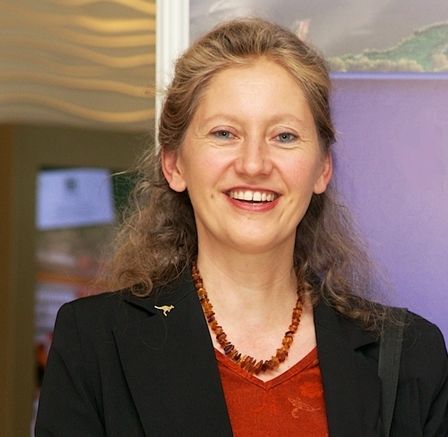“Even though there is a persistent gender gap, the impact of women in audio continues to grow,” wrote Marlene Mathew, Jennifer Grossman and Areti Andreopoulou in a paper presented at the 2016 AES Convention. Never have those words been truer than as Nadja Wallaszkovits assumes the role of AES president at a momentous time in the society’s 70-year history.

“I am thrilled by the huge success and involvement resulting from the new AES Diversity and Inclusion Committee on our Board of Governors,” says Wallaszkovits, who has served on the committee since its inception last year. “The last election results show a tremendous success in gender diversity. I will be working with my colleagues Leslie Gaston-Bird, D&I chair, Jessica Livingstone and Piper Payne—all three elected as governors for the coming two years—as well as with my distinguished successor, Agnieszka Roginska, who is next year's president-elect. This constellation of powerful women is exceptional, and I'm very proud to be part of it.”
The Diversity and Inclusion Committee’s stated goal is to promote a more demographically representative, diverse and inclusive AES membership, Wallaszkovits continues. “Conventions and conferences are one arena where our attitude towards diversity and inclusion manifests, and we would like to ensure our pledge will be successfully implemented.”
Wallaszkovits, who is chief audio engineer at the Phonogrammarchiv of the Austrian Academy of Sciences in Vienna, has been active in the AES for some considerable time, most recently co-chairing the program for the 2018 AES International Conference on Audio Archiving, Preservation and Restoration. She is vice-chair of the Austrian section and active in the Technical Committee on Archiving Restoration and Digital Libraries as well as the SC-07 Subcommittee on Metadata for Audio.
“AES events are the flagship of our community,” she comments. “Having been involved many times in the organization of AES conventions and conferences, I know how important successful events are to serve our membership and to expand the successful network of professionals, students and the industry.”
Student membership is crucial to the growth and continued expansion of the AES. “The students are our future—and also the big potential for the industry,” says Wallaszkovits. “We support them in many ways, for example, with the student delegate assembly, which has global participation. We fund travel for regional officers of that committee to our international conventions. Student and career development have become important topics of our conventions. A major opportunity to present students works is the student recording competition/recording critiques.”
The AES currently has over 12,000 members affiliated with more than 75 AES professional sections. There are more than 95 AES student sections worldwide. “It is very encouraging to see the strong membership growth in Latin America and Asia,” says Wallaszkovits.
The AES in its conceptual design is outstanding, she says, and its combination of world-leading scientific contributions, educational events and industry connections can be further developed to expand the society’s membership. “Recent events, such as AES@NAMM, have shown dedicated success,” she notes.
“It is more than satisfying to see that this year's AES in New York has a large number of new exhibitors or exhibitors returning after a number of years away,” she also observes. “I think that this is a great sign that our constant work on industry relations is a fruitful one.”
Yet there is room for improvement, Wallaszkovits admits. “We should also focus on further development of the European Convention and the advancement of industry engagement in the exhibition.”
AES • www.aes.org
This story was originally published on ProSound.